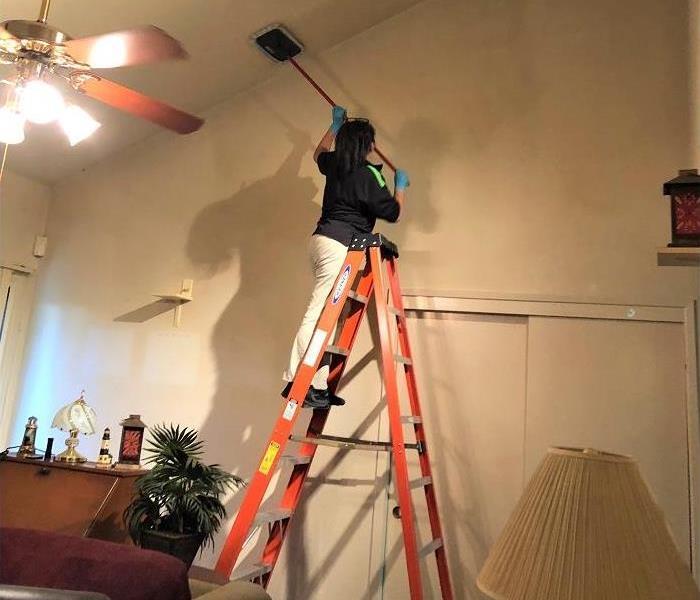What to Do When Water Floods Your Home or Business
3/1/2021 (Permalink)
A flood is a damaging occurrence that can make homeowners and tenants devastated. Floods can lead to a massive loss of valuable belongings. In worse cases, it may involve the loss of lives. For most businesses, flooding can cause significant damage that can make you lose more than you have ever gained in the company so far.
While prevention is always better than cure, everyone needs to know what to do to save the day when this overwhelming incidence occurs. Here’s a step-by-step guide on what to do when water floods your home or business.
Step 1: Ensure your safety first.
The first thing to do when a flood comes threatening is to ensure your safety and every other member of your household. Staying safe might mean leaving the building immediately to a safe place nearby, taking valuable items that you would never want to lose as long as it is safe to do so.
Before you leave the building, ensure you turn off the power and take protective clothing such as rubber boots and gloves, which will be useful when you are returning to deal with the aftermath. Note that you don’t have to evacuate the property if the flooding is minimal.
Step 2: Stop and remove water
Before the flood becomes overwhelming, it is essential to find the water source coming into your building and make every attempt to stop the continual flow of water. Though this step might be somewhat challenging considering the pressure that comes with having a flood in your building, it is one of the best ways to stop the flood.
After you might have successfully stopped the water's inflow, the next thing is to start removing the water that has already occupied your property. You can use buckets, bins, and hoses to drain the water.
Step 3: Dry out the building.
After removing the water in the building, you will have to dry the place before moving in again. You can use an air conditioner or portable fans to dry all wet areas. Dehumidifiers are also one of the easiest ways of drying out a property.
Step 4: Clean up
After the whole building becomes dried up, it’s time to clean up the mess and rearrange it for living or business again. Note that you may need to remove drywall, flooring, and other things that the flood might have damaged.
Step 5: Repairs
Indeed, the flood would have damaged some things in the building. Ensure that you do every necessary repair to make the property ready and conducive for use again. If the flood had soaked some electronics, you would need to fix them or replace them if the damage is beyond repairs.
Floods can pose a lot of damages to homes and businesses, but an early response can help you reduce the amount of wear and lower the risk of losing most of your valuable belongings. Following the steps mentioned above will save you big from losing your business or homes to a flood.




 24/7 Emergency Service
24/7 Emergency Service
